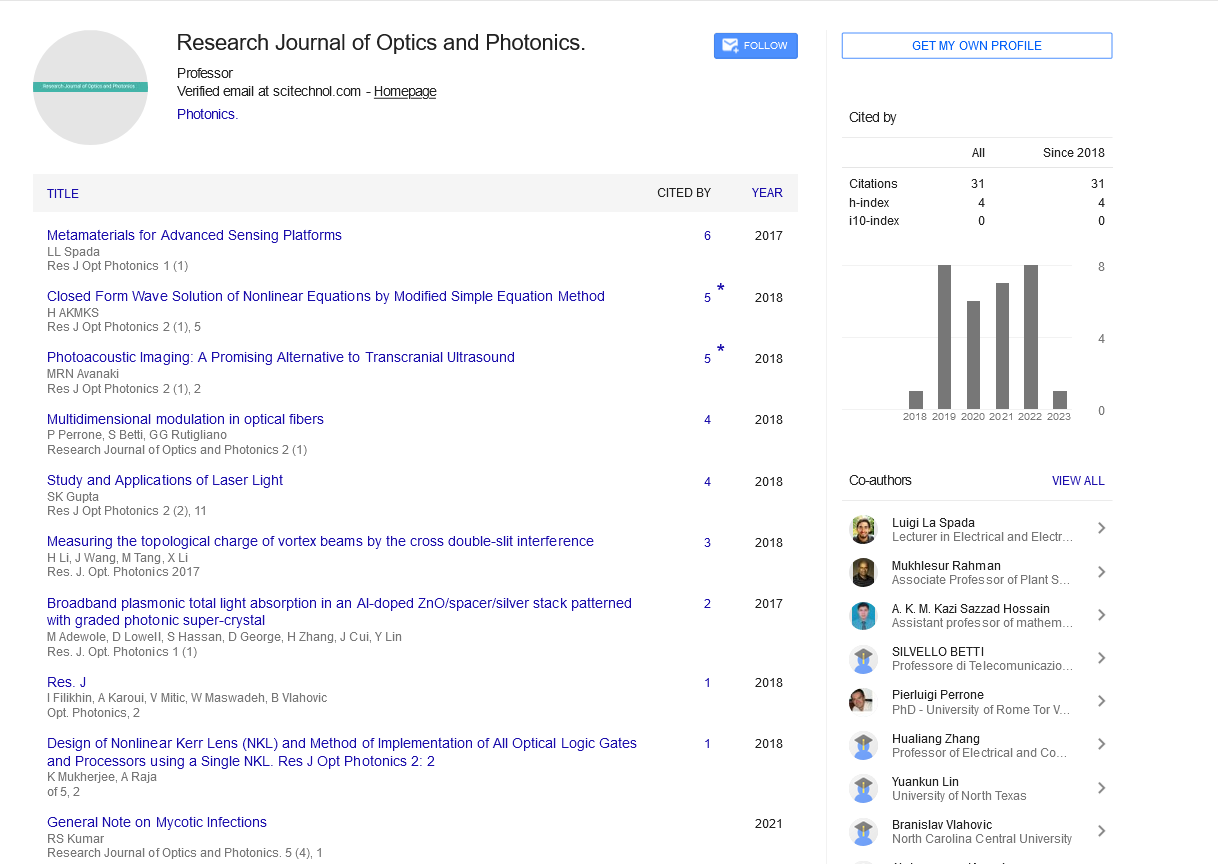Highly efficient and stable semi-transparent perovskite photovoltaic cells
Sheng Hsiung Chang and Kun-Mu Lee
Chung Yuan Christian University, Taiwan
Chang Gung University, Taiwan
: Res J Opt Photonics
Abstract
Regular-type tri-halide organic-inorganic perovskite photovoltaic cells (Au/Spiro-OMeTAD/Perovskite/TiO2/ FTO/glass) have reached the desired power conversion efficiency of over 20% for commercial applications. The high photovoltaic performance of perovskite solar cells relies on the superior optoelectronic properties, such as relative low refractive index, large light harvesting capabilities, small exciton biding energy, large carrier mobility and long carrier diffusion length. In recent years, the stabilities of organic-inorganic perovskite materials have been improved by doping inorganic cations (Rb and/or Cs) while keeping the PCE. Li-doped spiro-OMeTAD materials have been widely used as the hole-transport layer (HTL) in regulartype perovskite photovoltaic cells. However, spiro-OMeTAD materials can be degraded due to the diffused I- and CH3NH3+ ions, which prevents the oxidation of spiro- OMeTAD, thereby decreasing the electrical properties of spiro-OMeTAD materials. A many organic hole-transport materials have been developed to be an alternative HTL for improving the device stabilities. The fabrication conditions of Ag electrodes can strongly influence the short-circuit current density (JSC) and fill factor (FF). In general, the Ag electrode has to be thermally deposited on top of an organic electron-transport layer (ETL) or an organic HTL in order to avoid the formation of the Ag/perovksite interface. However, high-quality transparent metal oxide electrodes (ITO and Al-doped ZnO) have to be fabricated by using sputtering methods. It can be predicted that the excessive bombardment energy during the sputtering process for the deposition of a transparent top electrode must damage the ETL or HTL, which results in the formation of recombination centers embedded in the ETL or HTL. In this study, the goal is to realize semi-transparent perovskite photovoltaic cells by using an ITO/MoOx bilayer as the top electrode. In addition, the roles of the MoOx interlayer were investigated by using the atomic-force microscopic images, transmittance spectra and water-droplet contact angle images.
Biography
Sheng Hsiung Chang joined the faculty of the Research Center for New Generation Photovoltaics of NCU in 2012, where he was an Assistant Research Fellow and was promoted to Associate Research Fellow. In 2018, he joined the faculty of the Department of Physics of Chung Yuan Christian University as an Associate Professor. His current research interests include interfacial engineering of perovskite solar cells, device physics of solar cells, nano-plasmonic structures for energy conversion and bio-sensing applications, and time-resolved spectroscopic techniques. Dr. Chang is a member of the Phi Tau Phi Scholastic Honor Society (2004), Journal of TVS (Editorial Board) and Nanotechnology (Advisory Panel). He was among the recipients of the R&D 100 Awards Winner in 2015. He was received the Outstanding Research Awards from the NCU for 2016 and 2017.
E-mail: shchang@cycu.edu.tw
 Spanish
Spanish  Chinese
Chinese  Russian
Russian  German
German  French
French  Japanese
Japanese  Portuguese
Portuguese  Hindi
Hindi 